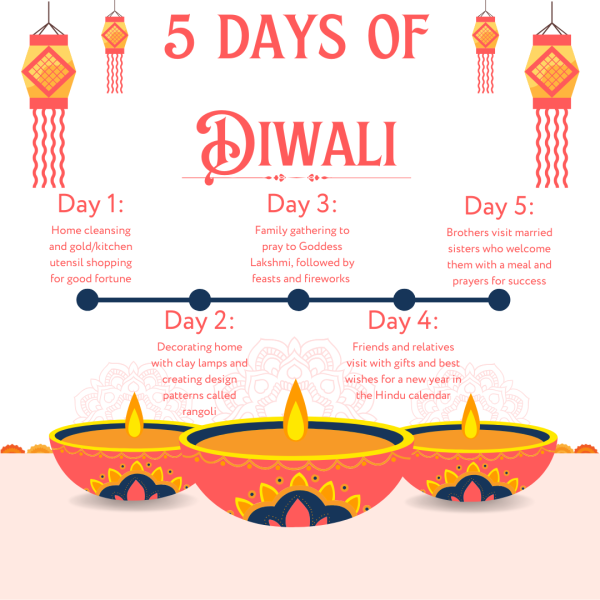Last week, some homes displayed small clay lamps during Halloween, marking the celebration of Diwali by many Hindu households. The festival was celebrated this year from Oct. 31 to Nov. 1.
Diwali translates to “row of lights,” and it is known for the clay lamps placed outside homes. These lamps symbolize light triumphing over darkness.
The holiday originated in India, but the celebrations differ depending on the region. For example, Northern India celebrates the story of King Rama returning to the city of Ayodhya after defeating Ravana, a demon king. In Southern India, it marks the day Lord Krishna vanquished the demon Narakasura.

On Nov. 1, RJ Iyengar, a biology teacher at Del Mar, wore a Salwar Kameez to represent her South Asian culture. A Salwar Kameez is a garment consisting of a top and bottom, similar to a suit. “I thought it would be good to bring cultural awareness to Del Mar because I know that I’m one of the few South Asian members on staff,” Iyengar said.
Iyengar described her Diwali celebrations, saying, “We celebrate this by making lots of food and having a big family celebration where everyone comes and wears new clothes, and then we light these lights called diya.” A diya is an oil lamp made from clay or mud with a cotton wick dipped in oil or ghee.
When asked why Diwali is important to her, Iyengar stated that it is a time to spend with family, reflect on the past, and hope for the future. She emphasized that Diwali is a time of renewal and celebration.






